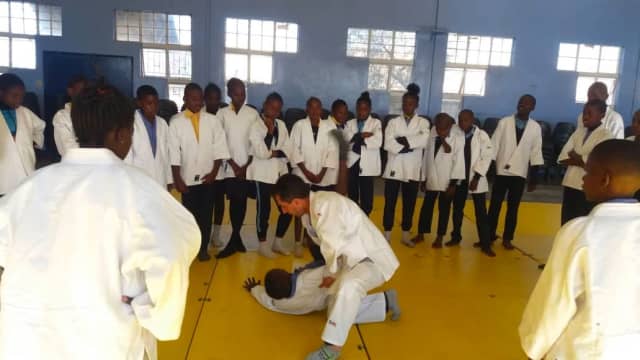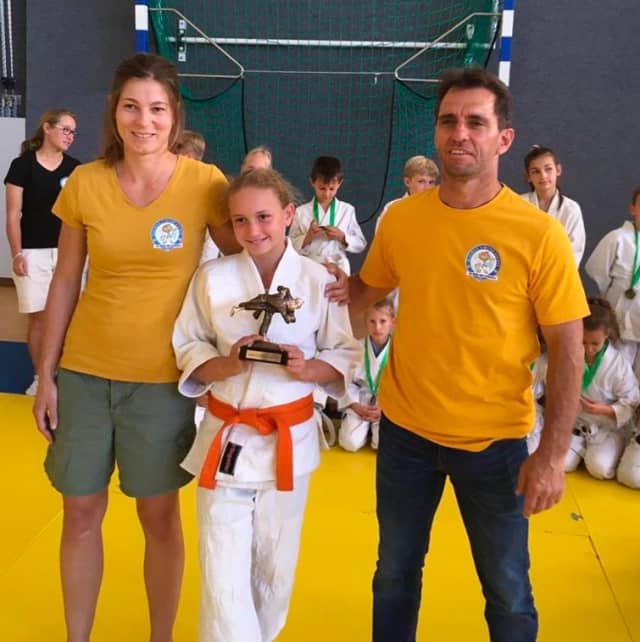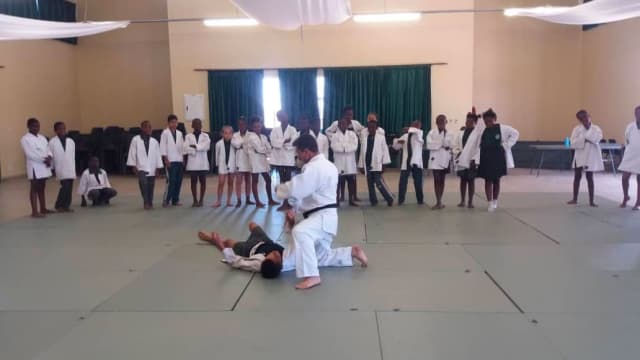"I was fortunate enough to start judo when I was 5 years old and I immediately had a great coach, Frank Smith Sensei, who was the national coach of Judo South Africa for many years in the 1970’s. He gave me a good solid Kodokan judo foundation, with strong basic knowledge. When I turned 16, I started to teach judo in schools. That was back in 1986
You know, teaching judo to children from different backgrounds, of different age groups and genders was the biggest challenge and good strong judo knowledge is not enough for this challenge. At that time, I was looking for secrets, something special, that could make the difference.
I realised that children love karate because of action movies but they often come to judo class because of their parents’ pressure and to try something new.
By just teaching solid breakfalls and good Kodokan judo throws, children often seem to lose interest after a while and normally after puberty, 14 years old and up, it starts to become even more challenging.
To get more experience and knowledge, I travelled the world and visited numerous countries, joining in and teaching judo for children. This has really opened my eyes. It was like a big bang for me!
Today, I try as much as possible to develop judo games and I want students to have fun with Professor Kano's judo moral code. At the same time, I want to guarantee that training is done in a safe environment, within school halls.
I have noticed a clear increase in the number of people practising and I am able to keep the children longer in judo. I explain to them that falling safely will help them with doing any other kind of activity.
In Namibia, to enter the school system, falling safely was actually my gold card to convince schools and authorities to believe in judo.
Depending on my audience and the students in front of me, what age group and what level, I adapt my teaching. This is very important. We play lots of games, which are all judo-related, like using a ball for warm up and for breakfalls.
Children must have fun all the time. For example, we practise for a few minutes and then play a game where we are like sticks in the mud. Only the particular throw we have been working on can set you free from the mud.
When I select a particular throw to study, I always start with the basic technique, following the Kodokan syllabus (gokyo) and I teach the kuzushi (unbalancing the opponent) tsukuri (movement for entering) and kake (execution).
During the next lessons and the months to come, I want the throw to be executed on the move and in 3 different directions.
It is also important that ukemi are practised by uke from any given and unforeseen direction, to guarantee safety, as tori practises the throws. All that contributes to preparing children for their grading exams.
I also regularly organise weekend training camps, so all the children can be ready for our interschool team competition, which is our most prestigious event.
Of course, the Covid-19 pandemic has altered our plans a bit, but we are still active and I stay optimistic. I continue with judo classes 4 days a week at the Gymnasium school, with the full permission of the school director. There we welcome children from other schools as well.”
When one asks Stompie to talk about the Judo in Schools project in Namibia and about judo, it’s really difficult to stop him, but this is what we call passion. His passion for judo and for children is what can change the world.



